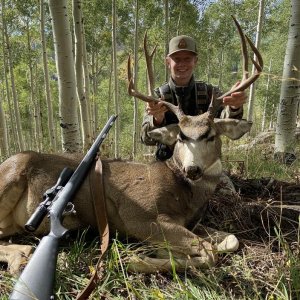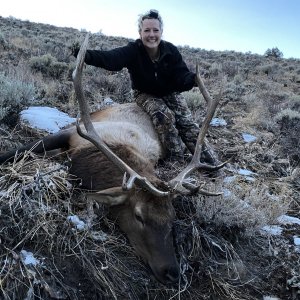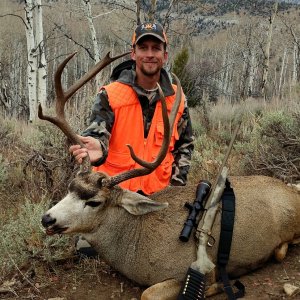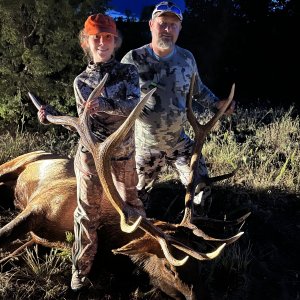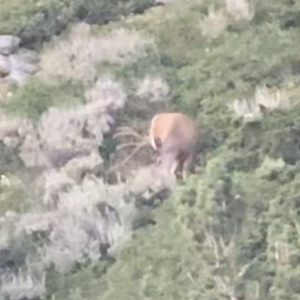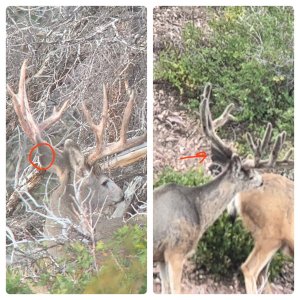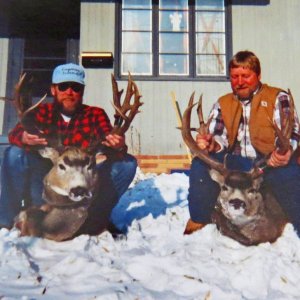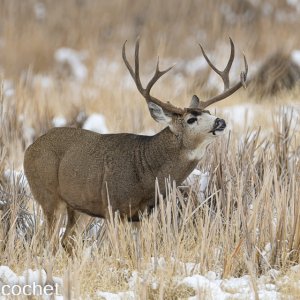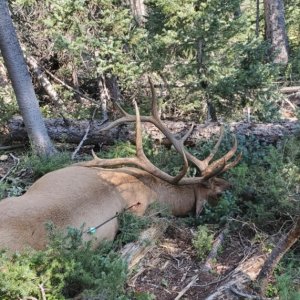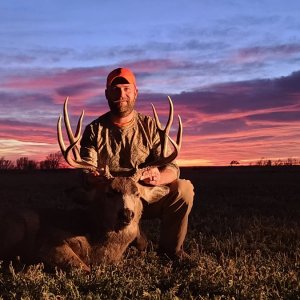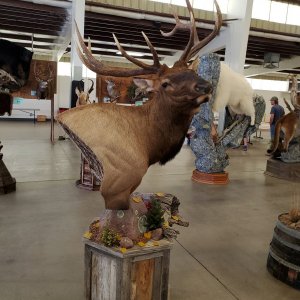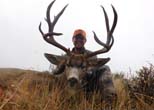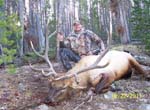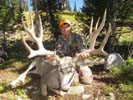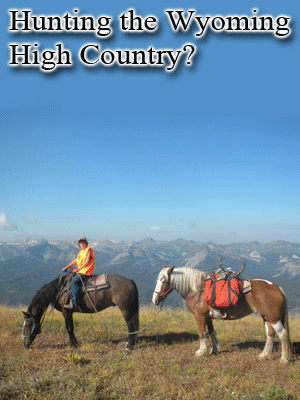ICMDEER
Long Time Member
- Messages
- 3,015
This might get a little long. Some have asked how combining antelope areas can result in increased revenues and more difficult drawing odds. Here's a quick rundown of some facts and one hypothetical situation. (But the hypothetical is reflective of the actual outcome.)
20% of antelope licenses are supposed to go to nonresidents.
40% (of the 20%) to the special licenses, 60% to regular licenses.
75% (of the 20%) to those in the points drawing, 25% to non point drawing.
Ok, so we'll keep this a simple example. We have two antelope areas. (I know 4 are being combined in most instances, but two are simpler.)
Area #1 has 200 licenses. It's near Lusk or Cheyenne - in a high demand situation. Area #2 has 200 licenses, but is in a low demand, more rural place with limited access.
In the past, area #1 has far more license demand than it can handle. Nonresident applications are more than triple the license allocations. Area #2 is the converse. Low demand and licenses are available after the drawing, up to the season opener. Nonresident draw is 100% in the regular drawing in area #2. Residents snap up licenses as leftovers so they'll have a place to hunt, since many of them know landowners and can get some limited access. Nonresidents also buy leftovers, but have a tougher time finding a place to hunt.
Area #1 also has tons of walk-in areas, but they get pounded. Hunters galore and from what I know, Kevlar orange has been recommended. Antelope are there, but soon run to private areas where hunting is limited or not allowed.
Now, we combine the areas. There are still 400 licenses. But because of the high demand in area #1, that license demand "spills over" into area #2. The result is a significant increase in hunter pressure around those already high-pressure walk-in areas and still little hunting and demand in the more rural/remote areas.
Licenses odds go way down in area #2, but are better in area #1. Because of the increased demand for licenses in the combined areas, G&F sells more nonresident licenses. Where the licenses in area #2 were available as leftovers previously, they are now all sold in the drawing, and many are sold as special licenses. None were sold as special licenses in area #2 in the past, because it was not necessary to apply for a special license to draw in that area.
A good example of this occurred in the newly established/combined area 11 last year. Nonresidents bought 176 of 350 total licenses. You don't need a calculator to know that's just over 50% of the total licenses in the area. G&F sells more nonresident licenses, sells more nonresident special licenses. G&F makes more money. That's OK.
My issues are that it creates an unequal distribution of hunters and some areas get pounded, while others have little to no harvest. The G&F folks I've visited with say that the landowners with antelope should sign up as walk-in areas. The landowners I've visited with just don't want that. And the landowners are now mad about all of the road hunters driving through because they can't find an antelope in the walk-in areas, but still want to hunt. But the landowners do want some resident friends, and nonresident friends and clients to be able to draw licenses in their areas, as it was before the areas were combined. Drawing that license is now more difficult.
My real concern is that this change results in diminished or reduced management. G&F just says "Those areas are all private and the landowners control access anyway." To me, that's skirting the G&F responsibility to manage the big game of our state. If that's their thought, why not make all private land antelope hunting in Wyoming a general license? I have always appreciated the quality management of our pronghorn antelope and to me, this is a definite step backwards.
This is happening in 8-12 areas in SE Wyoming right now. I see more downside than I do upside and would hope that folks will speak their peace. I know it's too late in 2014, except for the Commission meeting, and it is likely a done deal. But it does cause heartburn for me.
I also know that the fault-finders will pound away on me. So don't be discouraged if I don't respond. I don't live my life on MM and I'm doing lots of other stuff right now. I'm just posting this to let everyone know the consequences and start some conversations.
20% of antelope licenses are supposed to go to nonresidents.
40% (of the 20%) to the special licenses, 60% to regular licenses.
75% (of the 20%) to those in the points drawing, 25% to non point drawing.
Ok, so we'll keep this a simple example. We have two antelope areas. (I know 4 are being combined in most instances, but two are simpler.)
Area #1 has 200 licenses. It's near Lusk or Cheyenne - in a high demand situation. Area #2 has 200 licenses, but is in a low demand, more rural place with limited access.
In the past, area #1 has far more license demand than it can handle. Nonresident applications are more than triple the license allocations. Area #2 is the converse. Low demand and licenses are available after the drawing, up to the season opener. Nonresident draw is 100% in the regular drawing in area #2. Residents snap up licenses as leftovers so they'll have a place to hunt, since many of them know landowners and can get some limited access. Nonresidents also buy leftovers, but have a tougher time finding a place to hunt.
Area #1 also has tons of walk-in areas, but they get pounded. Hunters galore and from what I know, Kevlar orange has been recommended. Antelope are there, but soon run to private areas where hunting is limited or not allowed.
Now, we combine the areas. There are still 400 licenses. But because of the high demand in area #1, that license demand "spills over" into area #2. The result is a significant increase in hunter pressure around those already high-pressure walk-in areas and still little hunting and demand in the more rural/remote areas.
Licenses odds go way down in area #2, but are better in area #1. Because of the increased demand for licenses in the combined areas, G&F sells more nonresident licenses. Where the licenses in area #2 were available as leftovers previously, they are now all sold in the drawing, and many are sold as special licenses. None were sold as special licenses in area #2 in the past, because it was not necessary to apply for a special license to draw in that area.
A good example of this occurred in the newly established/combined area 11 last year. Nonresidents bought 176 of 350 total licenses. You don't need a calculator to know that's just over 50% of the total licenses in the area. G&F sells more nonresident licenses, sells more nonresident special licenses. G&F makes more money. That's OK.
My issues are that it creates an unequal distribution of hunters and some areas get pounded, while others have little to no harvest. The G&F folks I've visited with say that the landowners with antelope should sign up as walk-in areas. The landowners I've visited with just don't want that. And the landowners are now mad about all of the road hunters driving through because they can't find an antelope in the walk-in areas, but still want to hunt. But the landowners do want some resident friends, and nonresident friends and clients to be able to draw licenses in their areas, as it was before the areas were combined. Drawing that license is now more difficult.
My real concern is that this change results in diminished or reduced management. G&F just says "Those areas are all private and the landowners control access anyway." To me, that's skirting the G&F responsibility to manage the big game of our state. If that's their thought, why not make all private land antelope hunting in Wyoming a general license? I have always appreciated the quality management of our pronghorn antelope and to me, this is a definite step backwards.
This is happening in 8-12 areas in SE Wyoming right now. I see more downside than I do upside and would hope that folks will speak their peace. I know it's too late in 2014, except for the Commission meeting, and it is likely a done deal. But it does cause heartburn for me.
I also know that the fault-finders will pound away on me. So don't be discouraged if I don't respond. I don't live my life on MM and I'm doing lots of other stuff right now. I'm just posting this to let everyone know the consequences and start some conversations.

